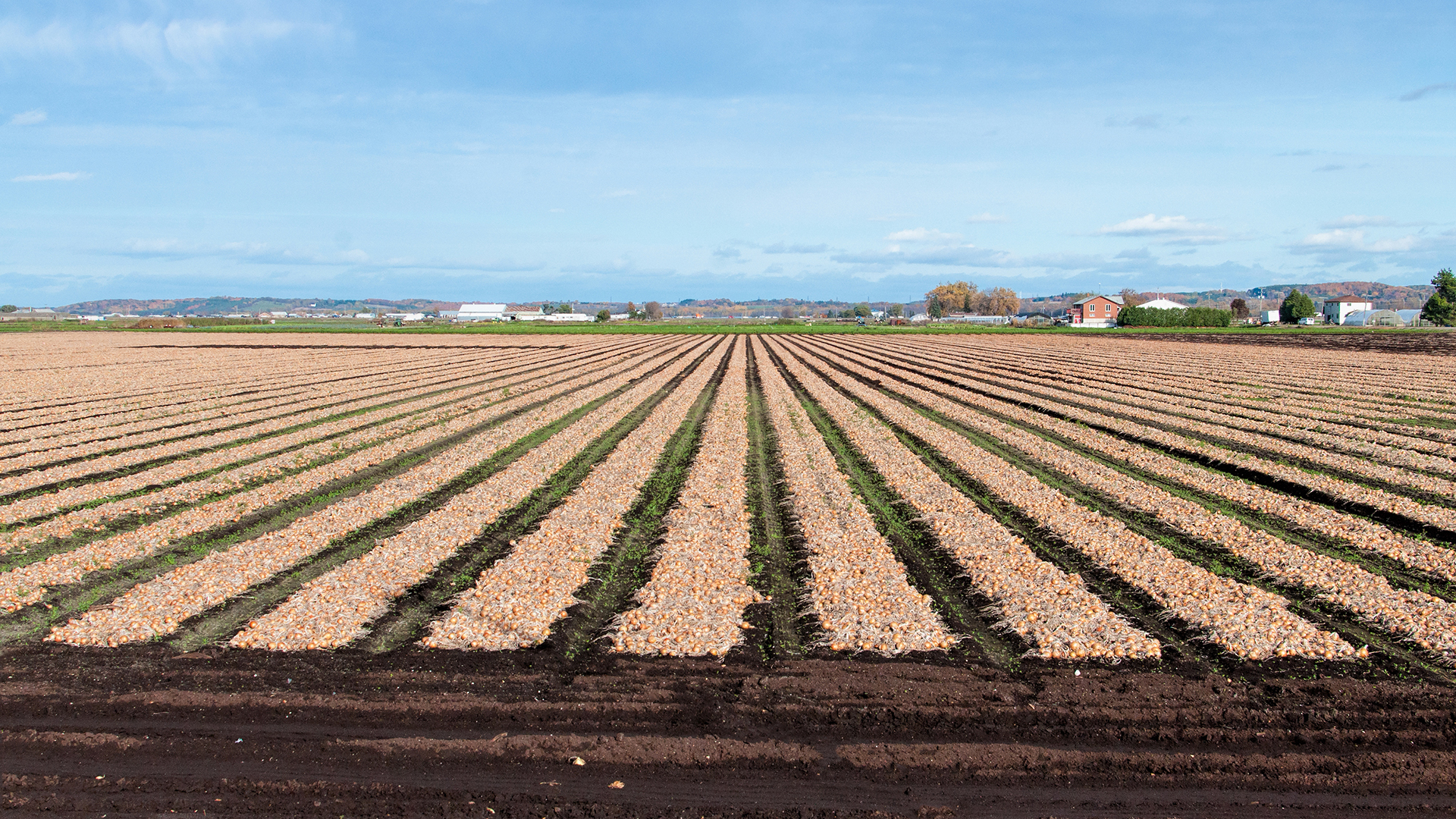
For most Canadians, thinking back to March 2020 conjures images of panic buying and empty grocery store shelves. However, the onset of the COVID-19 pandemic affected the food supply chain and consumers in other, less obvious ways. Lockdowns and restaurant closures during the first wave led to drastic shifts in consumer spending and an excess supply of certain fresh products. While e-commerce enabled some businesses to stay afloat and reach consumers virtually, others had a harder time with the transition due to inadequate broadband service or online infrastructure.
Despite those challenges, the food supply chain in Canada did not break, as the Ontario Chamber of Commerce explains in its recent policy brief: Growing a More Resilient Food Supply Chain in Ontario. Instead, as the Arrell Food Institute concluded, the food system stabilized relatively quickly. The businesses that make up our complex food supply chain continued to provide Ontarians with uninterrupted access to nutritious and safe food.
However, COVID-19 not only accelerated certain agri-food issues, such as the shift to e-commerce, but exposed others, such as the inadequacies associated with programs intended to stabilize the sector and longstanding labour shortages – issues that will extend beyond COVID-19 if left unaddressed.
While some of the recommendations in the chamber’s brief may be challenging or costly to implement, they should not be ignored. Ontario’s agri-food sector contributes more than $47 billion to the provincial GDP and supports 861,000 jobs. Since an entirely new public health emergency could emerge in the future, the solutions in the policy brief would ensure Canada’s agri-food sector is able to withstand future challenges by supporting small and agri-food businesses, rural communities and the broader economy.
Helping agri-food businesses transition to online sales
Despite the economic hardships brought on by the current health crisis, Canadians are interested in buying local food, even if it means paying a little extra – which the Conference Board of Canada says is because locally grown fruits and vegetables are usually picked at their peak freshness, have a lighter environmental footprint, and provide consumers with the opportunity to support local farmers, jobs and communities.
Yet, the local food sector has been slower to transition to online. In April 2020, the Ontario and federal governments launched the Agri-Food Open for E-Business program to help farmers’ markets, food producers, retailers, garden centres, nurseries, greenhouses and agricultural associations establish or expand their online presence. The program received an overwhelmingly positive response. However, it was oversubscribed and, just a few weeks after its launch, new applications could not be submitted. By December 2020, the province announced $3.5 million worth of funding for 700 businesses through one of the two funding streams of the program.
Given the demand for this timely program, both levels of government should create a new intake round to help the sector evolve alongside consumer trends. Although this would require an additional investment, helping the agri-food sector transition to e-commerce will enable these businesses to expand, meet consumer demand for local food, and stimulate growth that will be critical to economic recovery.
Improving the AgriStability program in Ontario
There have also been underlying issues within the agri-food sector that predated COVID-19 but have since been aggravated. Ontario farmers have experienced mounting risks and market volatility in recent years – ranging from unpredictable weather to rising input costs. For this reason, farmers can pay to participate in various business risk-management programs. AgriStability is one of these programs in Ontario. It is specifically designed to help farmers who experience large declines in their incomes during difficult economic periods.
However, the program is in urgent need of reform. The shortcomings associated with AgriStability have led to industry frustration and dwindling participation. With no indication that these risks and uncertainties will decline, there is a need for well-funded government programs that provide Ontario farmers with the support they need to meet challenges head-on and continue investing in their operations.
How can the program be improved? The federal, provincial and territorial governments should raise the $3 million payment cap that eligible farmers can receive through this program. While inflation and input costs have grown in the last 20 years, the payment cap has remained stagnant. Ontario should also enact systems to process full and interim payments more quickly. A significant amount of time can elapse between when a farmer experiences a loss, makes a claim to Agricorp and receives a payment. Although these changes would increase costs for governments, they would ensure the program actually functions as it was intended. It would also help farmers recover their losses in the short-term and prevent the closure of cash-strapped family farms in the future.
Filling the talent pipeline in agriculture
In addition to access to money, access to human capital is also critical for this sector. During the first wave of COVID-19, Canadian farmers experienced many difficulties hiring temporary foreign workers due to border closures and travel restrictions. Research conducted by the Canadian Agricultural Human Resources Council (CAHRC) found this led to stress, production delays and new costs for farmers. It also caused farmers to delay or cancel expansion plans. In sum, CAHRC found this labour shortage resulted in $2.9 billion in lost sales.
Beyond the immediate concerns of farmers not having enough workers in the coming year, the agricultural sector faces a long-term, structural labour shortage. In the next eight years, Canada faces a shortage of workers for an estimated 123,000 agricultural jobs, with Ontario accounting for the majority of them. Compounding this is the fact that the average farm operator is 55 years old and the sector has faced longstanding difficulties when it comes to recruitment due to the rural, seasonal and physical nature of agricultural work.
Encouragingly, the technological shifts taking place in agricultural sector represent an opportunity to attract the next generation of skilled workers and grow the economy. To this end, governments must continue to invest in organizations like AgScape and campaigns that educate young people about how agriculture and food production is evolving, as well as the array of careers available in this increasingly tech-savvy sector.
Ontario should also invest in innovative facilities like the W. Galen Weston Centre for Food at Durham College that provide young people with valuable hands-on training. Action must also be taken to address the barriers and structural issues that many aspiring farmers face, namely access to capital and land. Ensuring enough people want to join the next generation of farmers will require a multi-pronged approach and the rewards may not be immediate. However, these steps will support the long-term sustainability of the sector by bringing modern farming to more communities, creating jobs and stimulating economic growth.
There is no shortage of pressing priorities confronting public policy-makers, but the issues outlined above underscore the need for swift action and strategic investments to ensure Ontario’s agri-food sector remains a significant economic driver and retains a competitive advantage. With the right policies and programs in place, these recommendations will also serve to better position the province to manage future disruptions.
This report was informed by Beef Farmers of Ontario, Durham College, and the Ontario Federation of Agriculture.











